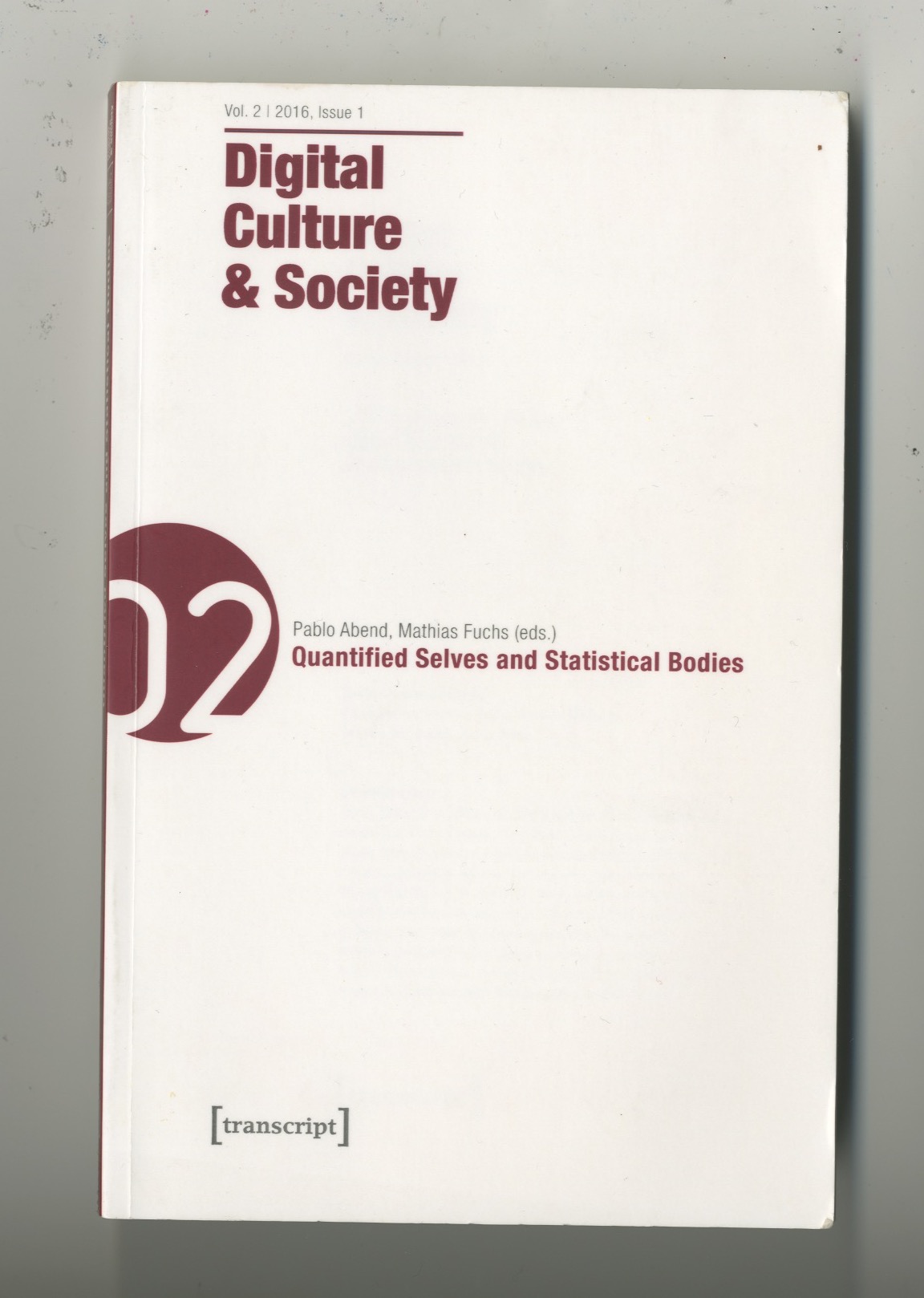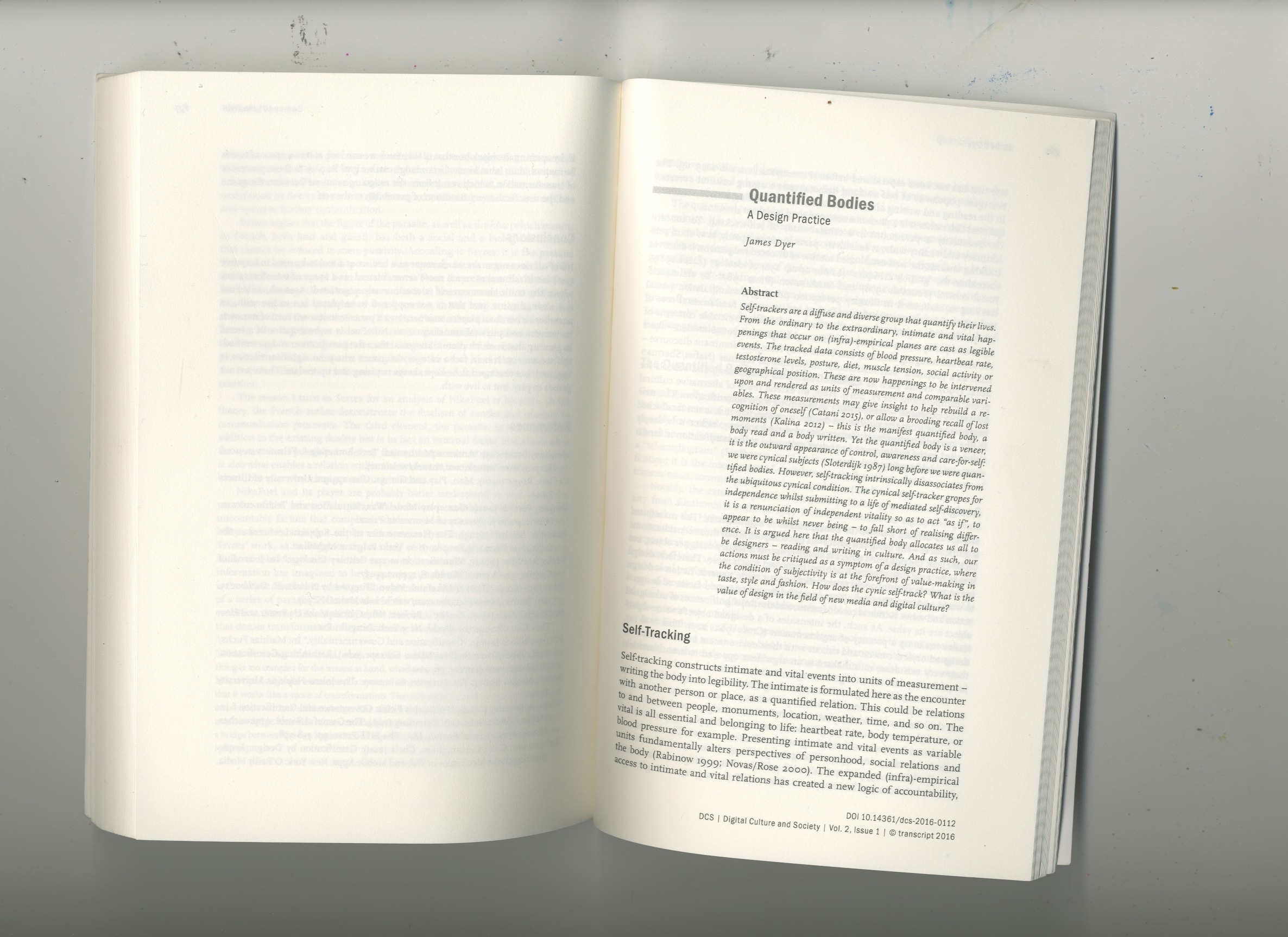Quantified Bodies: A Design Practice
Self-trackers are a diffuse and diverse group that quantify their lives.
From the ordinary to the extraordinary, intimate and vital happenings that occur on (infra)-empirical planes are cast as legible
events. The tracked data consists of blood pressure, heartbeat rate,
testosterone levels, posture, diet, muscle tension, social activity or
geographical position. These are now happenings to be intervened
upon and rendered as units of measurement and comparable variables. These measurements may give insight to help rebuild a recognition of oneself (Catani 2015), or allow a brooding recall of lost
moments (Kalina 2012) – this is the manifest quantified body, a
body read and a body written. Yet the quantified body is a veneer,
it is the outward appearance of control, awareness and care-for-self:
we were cynical subjects (Sloterdijk 1987) long before we were quantified bodies. However, self-tracking intrinsically disassociates from
the ubiquitous cynical condition. The cynical self-tracker gropes for
independence whilst submitting to a life of mediated self-discovery,
it is a renunciation of independent vitality so as to act “as if”, to
appear to be whilst never being – to fall short of realising difference. It is argued here that the quantified body allocates us all to
be designers – reading and writing in culture. And as such, our
actions must be critiqued as a symptom of a design practice, where
the condition of subjectivity is at the forefront of value-making in
taste, style and fashion. How does the cynic self-track? What is the
value of design in the field of new media and digital culture?


